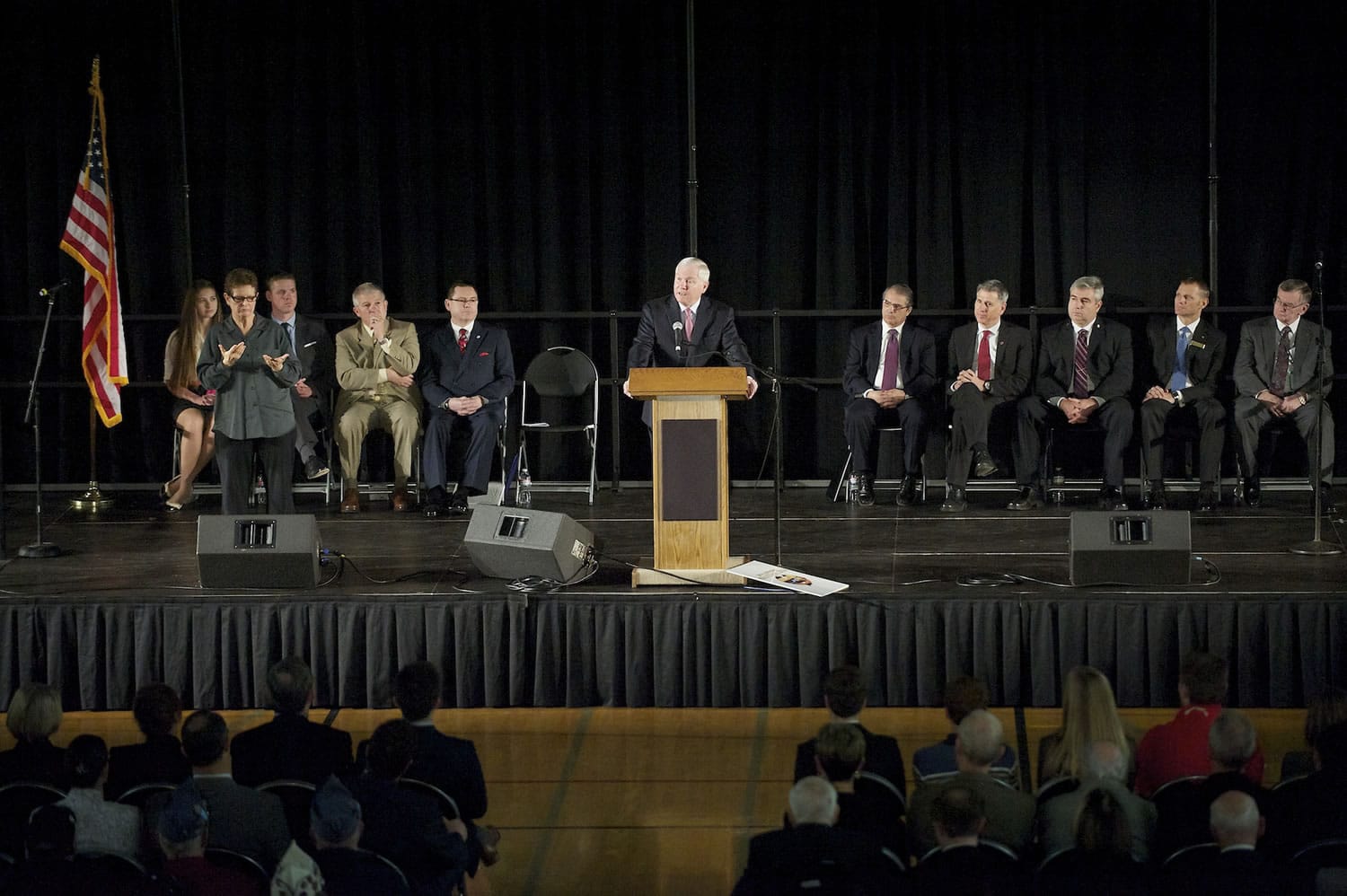Robert Gates worked for eight American presidents, but the leader who inspired him most, said the former U.S. secretary of defense, was a person he’d never met.
That leader was Gen. George Marshall.
Gates had an opportunity Thursday morning to highlight Marshall’s leadership characteristics in a most appropriate event: the annual Marshall Lecture.
And it was an appropriate spot, not far from the house where Marshall lived in 1936-38 when he commanded troops at Vancouver Barracks.
Marshall can teach us a lot about character and service, Gates told the audience at Hudson’s Bay High School.




